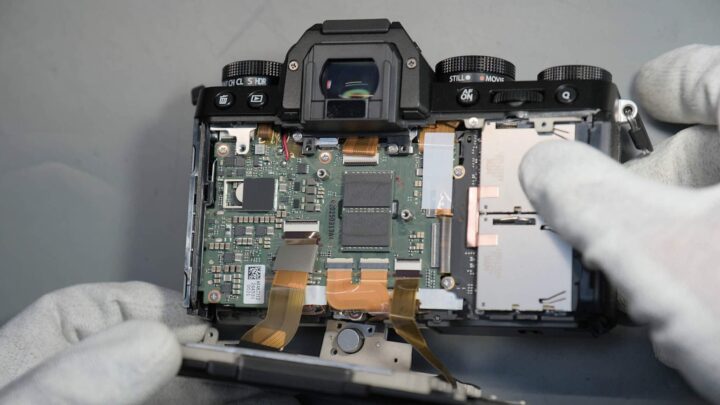Fujifilm X-T5 Teardown Shows Compact IBIS Unit and Why It’s Great for Infrared and Astrophotography

IRreCams has disassembled a Fujifilm X-T5 for infrared conversion.
Some things they noticed:
What is noticeable here is that the design of the housing parts feels lighter compared to a X-H2 or X-T4. It’s difficult to photograph, but you can feel it in your hand. Fujifilm has managed to save a few grams and bring a high-quality, compact camera onto the market.
These features [7 stops IBIS and Pixel Shift Multishot] are already available from the X-H2 but what is new is the compact design of the sensor unit. Since the first sensor-based image stabilization in the X-H1, Fujifilm has gradually made the sensor module smaller and lighter. The module in the X-T5 is the most compact we have ever seen in a Fujifilm camera – and the design on the data sheet shows no disadvantages compared to the slightly larger module in the X-H2.
Similar to the sensor of the X-H2, the X-T5 also has a few precautions to dissipate the heat from the sensor towards the housing, but these are not quite as extensive as on the X-H2 (after all, the X-H2 still has to keep a cool head even when recording 8K video).
Some modern cameras have an internal infrared LED. Stray light from this LED can be visible on infrared images in poor lighting conditions. [X-T5] has no such LED problems. This means that the X-T5 is not only suitable for the Conversion to an infrared or full spectrum camera but also for a Astromodification in order to become sensitive for H-Alpha light. […] The sensor shows no unwanted sensor artifacts such as a line pattern of the PDFA pixels and delivers a very good resolution, dynamic range and noise performance
You can read the full article and check out all images at IRreCams here.
NOTE July 31, 2025 is the last day at the current price for X-T5 – price increase on August 1)
- Fujifilm X-T5
BHphoto / Amazon / Adorama / Moment / BestBuy / Paul’s Photo

